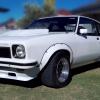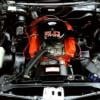I have spent the last 2 days fitting a new 90 litre Brown Davis drop tank to the hatch and whilst at it I thought id spend a bit of time calibrating the fuel gauge and sender as it has never read full.
After checking the sender resistance checks which were linear though the whole range from around 10 ohms up 80 ohms, I then lengthened the cable and sat in the drivers seat and slightly bent the arm (only the tiniest amount) so that the gauge showed full scale when at full stroke on the sender, then half way on the sender showed half on the gauge etc.
My question is why does the gauge and sender seem to work well when working from full then back to empty, but going the other direction empty up to full not so well. For instance if I put the sender up to full and leave it there it showed full on the gauge, then put the sender at half it would read half full. but if I put it down at empty and move it up to half and leave it 10 minutes it still wont read half on the gauge.
So it seems accurate from full down to empty but not so from empty up to full.
p.s. my dash has a new Jaycar regulator fitted and adjusted to deliver 5 volts.




 View Garage
View Garage












